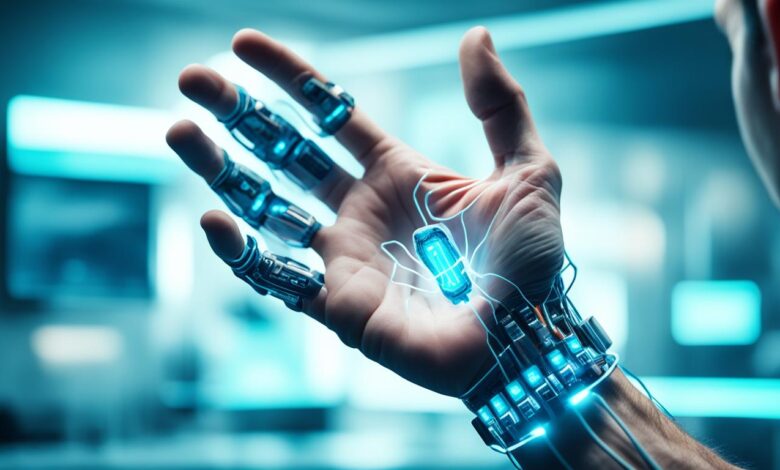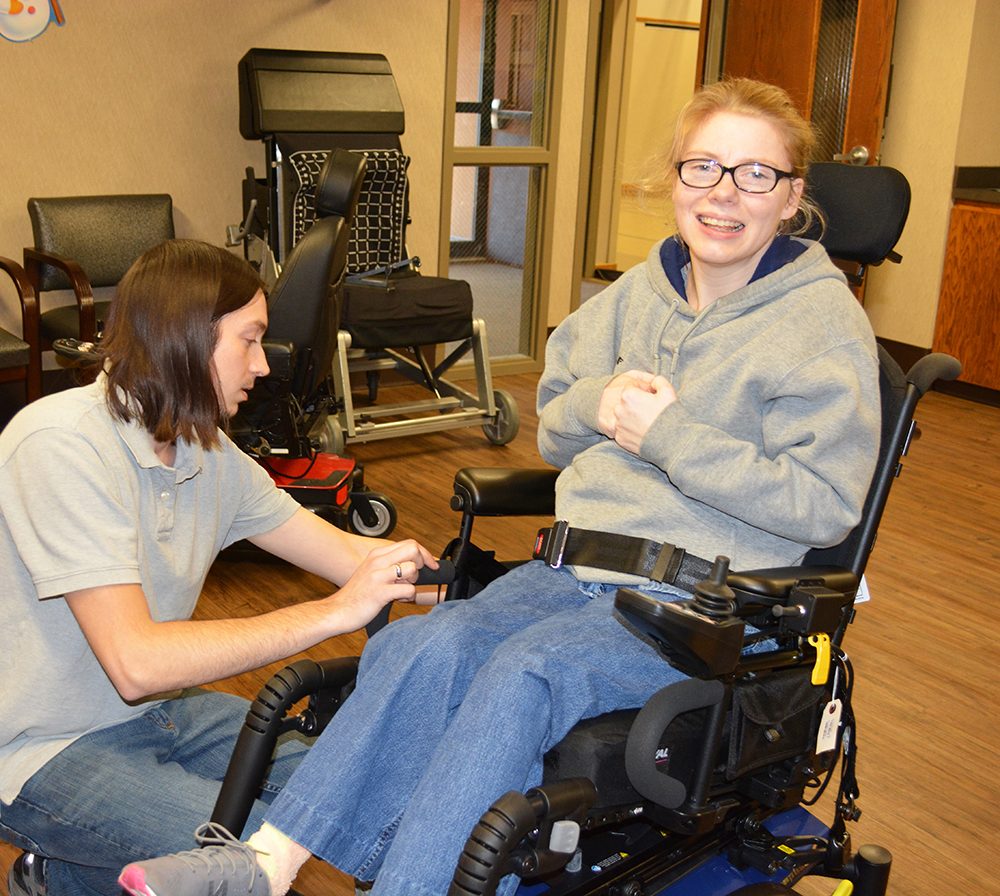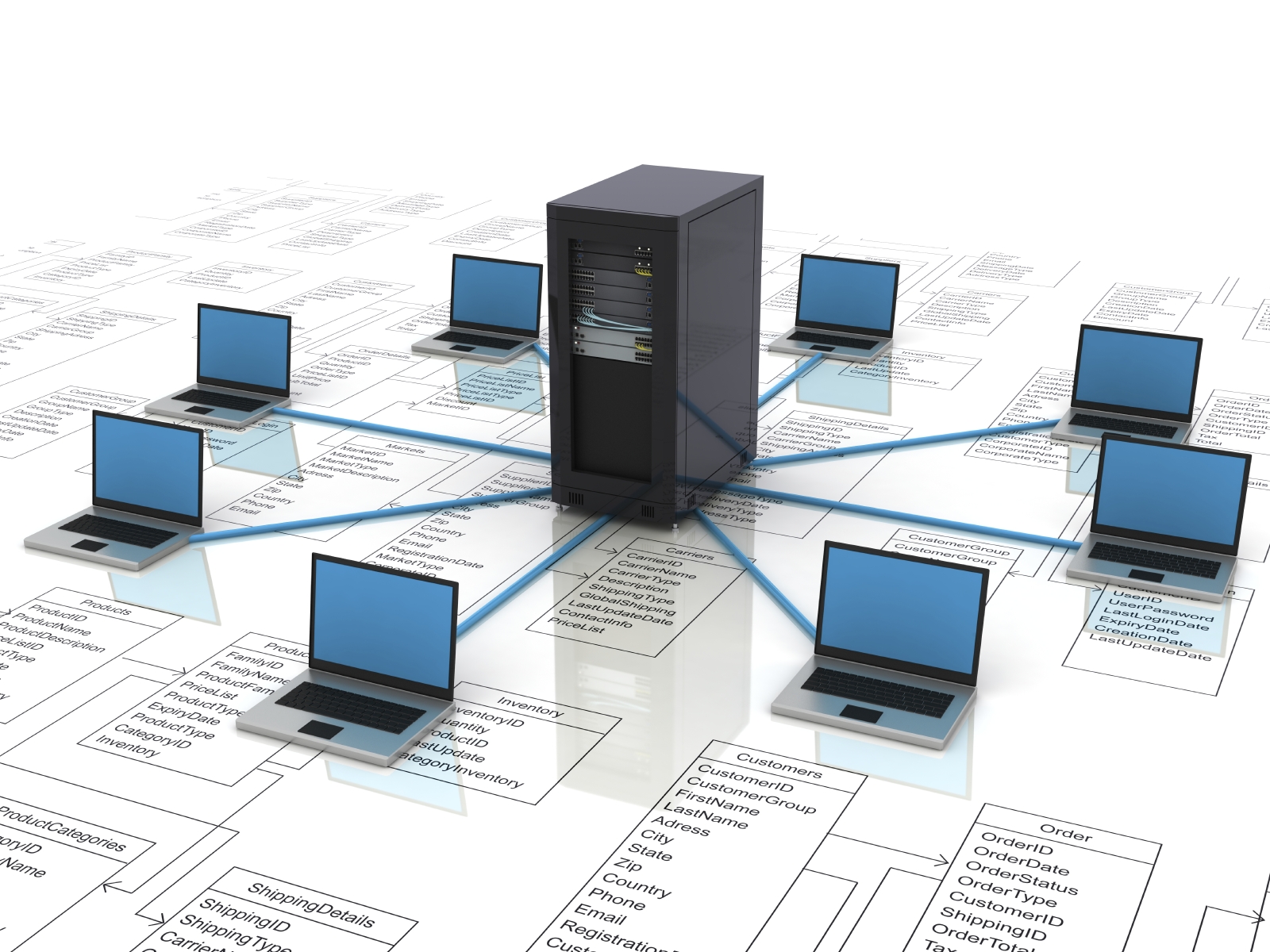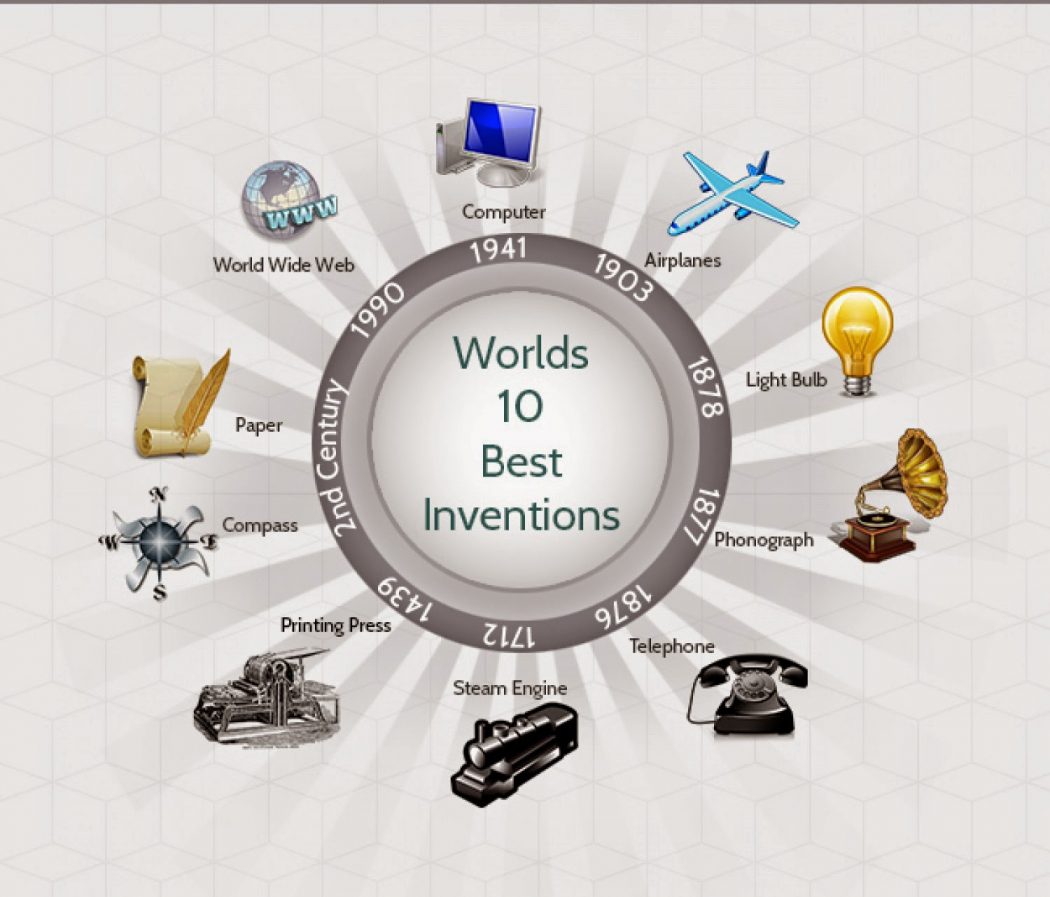
Biohacking and Human Enhancement: Pushing the Limits of our Biology
What if I told you that you could unlock the full potential of your biology?
That you could enhance your physical and cognitive abilities beyond what you ever thought possible? Welcome to the world of biohacking and and human enhancement, where science and technology meet human potential.
Biohacking is the practice of using technology and lifestyle modifications to optimize human performance and push the boundaries of our biology. It’s a journey of self-evolution where individuals seek to achieve optimized health and extended longevity. But how exactly does it work, and what incredible advancements lie at the intersection of biology and technology?
In this article, we delve into the fascinating world of biohacking, exploring the latest advancements and ethical debates surrounding human enhancement. From genetic engineering to cognitive function enhancement, join us as we embark on a journey to push the limits of our biology and unlock the untapped potential within us.
The Intersection of Technology and Biology: An Overview
The field of biohacking merges technology and biology, creating an interdisciplinary landscape of self-improvement and scientific advancement. Biohackers explore new frontiers in human potential by combining knowledge from genetics, neuroscience, computer science, and other fields. This section provides an overview of biohacking, showcasing the various ways in which technology is used to enhance human biology.
Biohacking represents a dynamic and rapidly evolving field, where the boundaries of technology and human potential are constantly pushed. Through innovative applications of technology, biohackers aim to optimize health, cognition, and physical capabilities, ultimately unlocking the full potential of the human body and mind.
By harnessing the power of technology, biohackers strive to optimize human performance, extend longevity, and improve overall well-being. As an interdisciplinary field, biohacking draws upon the expertise of scientists, engineers, and enthusiasts alike, fostering collaboration and innovation.
Advancements in technology, such as genetic engineering, neuroimaging, wearable devices, and data analytics, have enabled biohackers to investigate and experiment with human biology in ways that were previously unthinkable. These technological tools provide insights into the intricate workings of the human body and offer opportunities for targeted interventions to optimize health and well-being.
The image down represents the close relationship between technology and biology in the field of biohacking. It serves as a visual reminder of the interdisciplinary nature of biohacking and the fusion of science and technology in the pursuit of human optimization.
Entering the Era of the Grinder Movement
The grinder movement has emerged as a subculture within the biohacking community, characterized by individuals who push the boundaries of human enhancement through extreme body modifications and DIY biohacking experiments. These self-proclaimed cyborgs are pioneering a new era of human-machine integration, blurring the line between humans and machines.
Understanding the Grinder Subculture
The grinder subculture is driven by a shared fascination with pushing the limits of the human body and the desire to transcend the limitations of biology. These individuals see themselves as pioneers of transhumanism, advocating for the integration of technology into the human body to enhance physical and cognitive abilities.
Grinders often engage in a wide range of body modifications, including implants and sensory enhancements, to augment their capabilities and explore new frontiers of human potential. Magnetic implants, RFID chips, and even experimental brain-computer interfaces are just a few examples of the cutting-edge technologies embraced by the grinder movement.
The Role of Implants and Body Modifications in Biohacking
Implants and body modifications play a crucial role in the biohacking community, allowing individuals to push their physical and cognitive abilities beyond what is considered normal. These enhancements can range from simple RFID implants for access control to more complex sensory enhancements that expand human perception.
Through the use of implants, biohackers can achieve a deeper level of human-machine integration, blurring the boundaries between organic and synthetic. This opens up new possibilities for human potential and challenges traditional notions of what it means to be human.
Pioneering Examples of Cyborg Modifications
Within the grinder movement, pioneering biohackers have taken human-machine integration to the next level with remarkable cyborg modifications. These advancements include robotic limbs that restore mobility to individuals with disabilities and brain-computer interfaces that enable direct communication between the brain and external devices.
By seamlessly integrating machines into the human body, cyborg modifications provide individuals with enhanced physical capabilities and the ability to overcome limitations that were once thought to be insurmountable. These innovations represent a monumental leap forward in the quest for human enhancement and have the potential to revolutionize the lives of people with disabilities.
its not applicable to section 3.
CRISPR and the Genetic Revolution
CRISPR-Cas9 technology has revolutionized genetic engineering, providing scientists with unprecedented precision in editing the human genome. This powerful tool allows researchers to make targeted changes to specific genes, opening up new possibilities in the field of biohacking and human enhancement.
CRISPR, which stands for Clustered Regularly Interspaced Short Palindromic Repeats, is a system found in bacteria that can be used to cut and modify DNA. By harnessing this natural defense mechanism, scientists have developed the CRISPR-Cas9 gene-editing system, which allows for precise alterations to the genetic code.
One of the most exciting applications of CRISPR technology in biohacking is its potential to treat genetic diseases. By targeting and correcting faulty genes, CRISPR-Cas9 offers the prospect of eliminating inherited conditions and improving overall health. However, this raises important ethical considerations, as altering the human genome can have long-lasting consequences.
While CRISPR holds promise for enhancing human biology, it also presents ethical dilemmas. The ability to edit genes raises concerns about unintended mutations, ethical guidelines, and potential misuse. Responsible and cautious use of this technology is essential to ensure that its benefits are realized without compromising ethical standards.
Cognitive Function Enhancement: Beyond Traditional Limits
In the quest for optimizing cognitive function, biohackers are exploring various techniques and methods to push the boundaries of human capabilities. This section delves into the fascinating world of cognitive enhancement, showcasing cutting-edge approaches that go beyond traditional limits.
The Impact of Nootropics on Brain Optimization
Nootropics, commonly referred to as smart drugs, have gained significant attention as cognitive enhancers. These substances are designed to improve mental performance, memory, focus, and overall brain function. By targeting neurotransmitters, receptors, and brain enzymes, nootropics offer a range of cognitive benefits.
Scientifically supported mechanisms of action include enhancing synaptic plasticity, increasing blood flow to the brain, and promoting neuroprotection. Some of the commonly used nootropics include:
- Piracetam: Known for enhancing memory and learning.
- Modafinil: A wakefulness-promoting agent that improves focus and cognitive function.
- L-theanine: Found in green tea, it reduces anxiety and promotes relaxation without causing drowsiness.
- Caffeine: A natural stimulant that increases alertness and attention.
While nootropics can offer cognitive benefits, it is important to consider the potential risks and ethical considerations associated with their use. It is crucial to consult with healthcare professionals and adhere to responsible and informed usage.
Neurofeedback and Real-Time Biofeedback Methodologies
Neurofeedback and real-time biofeedback are emerging methodologies in the field of cognitive enhancement. These techniques involve the monitoring and modification of brain activity in real-time, allowing individuals to regulate their brainwaves and optimize cognitive function.
Neurofeedback utilizes advanced technology to provide individuals with real-time information about their brainwaves, enabling them to learn and modulate their brain activity consciously. By providing feedback on brainwave patterns, individuals can train their brains to improve focus, attention, and other cognitive abilities.
Real-time biofeedback involves monitoring physiological parameters such as heart rate, respiration rate, and skin conductance. By using devices that provide continuous feedback, individuals can gain insights into their autonomic nervous system and learn to regulate these processes in support of better cognitive performance.
These methodologies are gaining popularity among biohackers and researchers alike, as they offer promising potential for cognitive optimization and performance enhancement.
Understanding Transcranial and Vagal Nerve Stimulation Techniques
Transcranial stimulation and vagal nerve stimulation are non-invasive techniques that aim to enhance cognitive function by modulating brain activity and promoting neural plasticity.
Transcranial stimulation involves the application of mild electrical currents to specific areas of the brain, either through electrodes placed on the scalp or through specialized devices. This technique has shown promise in improving memory, attention, and overall cognitive performance.
Vagal nerve stimulation targets the vagus nerve, a major nerve that connects the brain to several vital organs. By stimulating the vagus nerve, cognitive functions such as memory, attention, and mood regulation can be potentially enhanced.
While transcranial and vagal nerve stimulation techniques offer promising avenues for cognitive enhancement, it is important to note that further research is needed to fully understand their long-term effects and ensure their safety.
‘Biohacking and Human Enhancement’: A Search for Optimized Health
Biohacking incorporates a comprehensive approach to optimizing health by focusing on lifestyle modifications and personalized interventions. In the pursuit of well-being, biohackers recognize the significance of nutrition, exercise, stress management, and sleep. These lifestyle factors play crucial roles in achieving optimal physical and mental well-being.
Nutrition is a fundamental aspect of biohacking for optimized health. By carefully choosing and customizing dietary choices, including macronutrients and micronutrients, biohackers aim to nourish their bodies to support optimal performance. They understand the impact of food on energy levels, cognitive function, and overall vitality.
Exercise is another crucial component of biohacking for optimized health. By tailoring their workout routines to meet their specific goals, biohackers optimize their physical fitness and enhance their body’s capabilities. Whether it’s strength training, high-intensity interval training (HIIT), or endurance exercises, biohackers carefully design their exercise regimens to achieve desired outcomes.
In addition to nutrition and exercise, stress management is a key focus area in biohacking. Biohackers acknowledge the detrimental effects of chronic stress on the body and mind, and they employ various techniques to promote relaxation, mindfulness, and emotional well-being. These may include meditation, breathing exercises, journaling, or engaging in creative activities.
Furthermore, sleep optimization plays a crucial role in biohacking for optimized health. Biohackers understand the importance of quality sleep in supporting cognitive function, physical recovery, and overall well-being. They employ strategies like creating a sleep-friendly environment, establishing consistent sleep schedules, and practicing relaxation techniques to ensure restorative sleep.
By considering the synergies between different biohacking techniques, biohackers can achieve a collective impact on their overall well-being. They understand that the integration of nutrition, exercise, stress management, and sleep optimization can lead to significant improvements in their physical and mental performance.
Experimental Frontiers: From Stem Cells to Sensory Deprivation
The field of biohacking is continuously pushing the boundaries of human potential and exploring various experimental frontiers. In this section, we will delve into three exciting areas of biohacking: the therapeutic applications of stem cells, the curative potentials of cryotherapy and infrared therapy, and the utilization of sensory deprivation tanks for mind and body reset.
Exploring the Therapeutic Applications of Stem Cells
Stem cells hold immense promise for regenerative medicine and the treatment of various diseases. These versatile cells have the unique ability to develop into different types of cells in the body, making them a valuable tool for repairing and regenerating damaged tissues.
Researchers and biohackers are exploring the therapeutic applications of stem cells in areas such as tissue regeneration, organ transplantation, and disease treatment. By harnessing the regenerative potential of stem cells, scientists aim to develop innovative therapies that can improve the quality of life for individuals with degenerative conditions or injuries.
However, translating stem cell therapies from the laboratory to clinical practice comes with its own set of challenges. Scientists must address issues such as the ethical implications of using embryonic stem cells, ensuring the safety and effectiveness of stem cell treatments, and overcoming immune rejection in transplantation procedures. Ongoing research in this field aims to overcome these challenges and unlock the full potential of stem cells in biohacking.
The Curative Potentials of Cryotherapy and Infrared Therapy
Cryotherapy and infrared therapy are two non-invasive treatments that have gained popularity in the biohacking community for their potential curative effects.
Cryotherapy involves exposing the body to extremely cold temperatures, typically using liquid nitrogen or specialized cryochambers. This treatment is believed to have various benefits, including reduced inflammation, pain relief, improved muscle recovery, and enhanced overall well-being.
Similarly, infrared therapy utilizes infrared light to penetrate deep into the body’s tissues, promoting cellular regeneration, improved circulation, and relaxation. This therapy has shown promise in addressing conditions such as muscle pain, joint stiffness, and even mental health disorders.
While cryotherapy and infrared therapy offer exciting possibilities for biohackers, it is essential to consider potential benefits and risks associated with their use. Consultation with healthcare professionals and adherence to safety guidelines are crucial to ensure a safe and effective experience.
Utilizing Sensory Deprivation Tanks for Mind and Body Reset
Sensory deprivation tanks, also known as floatation tanks, provide a unique experience of complete sensory isolation. These tanks are filled with warm water saturated with Epsom salt, allowing individuals to float effortlessly. The absence of external sensory stimuli creates a serene environment for deep relaxation and introspection.
Floatation therapy in sensory deprivation tanks offers a range of therapeutic benefits. The experience promotes relaxation, stress reduction, improved sleep, and enhanced creativity. Many biohackers find floatation therapy to be a powerful tool for mental and physical rejuvenation.
Scientifically, sensory deprivation triggers a shift in brainwave activity, inducing a meditative state and facilitating a deep sense of calm. This state of relaxation allows individuals to enter a state of profound rest and recharge their mind and body.
Moreover, floatation therapy has gained attention for its potential in aiding the management of certain conditions, such as chronic pain, anxiety, and post-traumatic stress disorder (PTSD). Ongoing research in this field aims to uncover the mechanisms behind the therapeutic benefits of sensory deprivation and further explore its potential applications in biohacking.
| Therapy | Potential Benefits | Risks |
|---|---|---|
| Cryotherapy | Pain relief, reduced inflammation, improved recovery | Potential risks from extreme cold temperatures |
| Infrared Therapy | Promotes tissue regeneration, improves circulation, relaxation | Risks from overexposure to infrared light |
| Sensory Deprivation Tanks | Relaxation, stress reduction, enhanced creativity | Potential anxiety or claustrophobia for some individuals |
These experimental frontiers of stem cells, cryotherapy, infrared therapy, and sensory deprivation tanks offer exciting possibilities for biohackers seeking alternative approaches to optimize their health and well-being. Continued research and exploration in these areas will further expand our understanding of their therapeutic benefits and how they can be strategically integrated into biohacking practices.
DIY Biohacking: The Age of Citizen Scientists
DIY biohacking has revolutionized the field of biohacking, empowering individuals to take control of their own biology and contribute to scientific research. No longer confined to the realm of professional laboratories, biohacking has entered a new era—the age of citizen scientists.
Citizen scientists are everyday individuals who engage in DIY biohacking experiments and research, driven by their curiosity and passion to explore the boundaries of human capabilities. They have access to community labs, open-source resources, and collaborative projects that enable them to share knowledge, collaborate with experts, and actively contribute to the field.
This DIY approach to biohacking brings unique challenges and opportunities. On the one hand, it allows for greater democratization of scientific research and promotes innovation through diverse perspectives and ideas. On the other hand, it raises concerns about safety, ethics, and the quality of data generated by non-professional researchers.
Nevertheless, the impact of citizen scientists in biohacking cannot be underestimated. They bring fresh insights, creativity, and enthusiasm to the field, pushing the boundaries of what is possible in human enhancement. By embracing open-source research and collaboration, citizen scientists are accelerating the progress of biohacking and contributing to the collective knowledge of the community.
As DIY biohacking continues to evolve, it is important to strike a balance between individual exploration and responsible experimentation. The field is shaped not only by professional scientists but also by the contributions of citizen scientists—a testament to the power of open collaboration and the potential of grassroots movements in driving scientific progress.
Wearable Tech and Implantable Devices: Biohacking in Real-Time
Wearable technology has revolutionized the way individuals monitor their health and well-being. These innovative devices, ranging from smartwatches to fitness trackers, provide real-time data on vital signs, sleep patterns, and physical activities. By harnessing the power of biofeedback, wearable tech enables individuals to optimize their health and make informed decisions about their lifestyle.
One of the key advantages of wearable devices is their ability to track and monitor various health parameters continuously. Through the use of sensors and advanced algorithms, these gadgets provide valuable insights into heart rate, blood pressure, calorie expenditure, and much more. This real-time feedback allows users to take immediate action to improve their well-being, whether it’s adjusting their exercise routine or managing stress levels.
In addition to monitoring physical health, wearable tech also holds great potential for personalized medicine. By integrating biofeedback devices with personalized health platforms, individuals can receive tailored recommendations and interventions to optimize their health. For example, wearable devices can analyze an individual’s sleep patterns and provide personalized suggestions for improving sleep quality. In this way, wearable tech empowers individuals to take control of their health and make proactive choices.
The Rise of Health and Wellness Monitoring Gadgets
The market for health monitoring gadgets has seen a significant surge in recent years, fueled by consumer interest in self-care and health optimization. These gadgets come in various forms, such as fitness trackers, smart clothing, and wearable sensors. They enable individuals to track their physical activity, monitor vital signs, and even analyze environmental factors that may impact their health.
For example, fitness trackers provide detailed feedback on steps taken, distance covered, and calories burned throughout the day. They also offer features like heart rate monitoring and sleep analysis to provide a comprehensive picture of an individual’s overall health. These devices have become popular among fitness enthusiasts and individuals looking to improve their lifestyle.
Smart clothing takes health monitoring to the next level by integrating sensors directly into garments. These sensors can track body temperature, muscle activity, and even hydration levels. This real-time data can help individuals optimize their physical performance and prevent injuries during exercise.
Wearable sensors are another exciting development in health monitoring gadgets. These small, discreet devices can be attached to the body or clothing to measure a range of health parameters, such as heart rate variability and skin temperature. They offer a non-invasive and convenient way to collect valuable data for biohacking applications.
RFID and NFC Technologies: From Tracking to Transacting
RFID (Radio Frequency Identification) and NFC (Near Field Communication) technologies are revolutionizing biohacking applications. Originally developed for tracking and identification purposes, these technologies have found their way into the world of health and wellness.
RFID technology uses radio waves to automatically identify and track objects. In biohacking, RFID tags can be implanted or worn as bracelets to enable seamless tracking of health-related data. For example, RFID tags can be used to monitor medication adherence, track physical activity, or even offer personalized reminders for specific health interventions.
NFC technology, on the other hand, allows for secure communication between two devices in close proximity. This technology enables biohackers to exchange information between wearables and implantable devices, opening up possibilities for seamless integration and personalized interventions. For instance, NFC technology can be utilized to transfer data from a wearable device to an implantable sensor, allowing for real-time health monitoring and personalized medicine.
Personalized Medicine Tailored Through Implantable Sensors
Implantable sensors represent a significant breakthrough in biohacking, offering the potential for real-time health monitoring and personalized interventions. These tiny devices can be implanted under the skin to collect data on vital signs, biomarkers, and other health parameters.
One of the key advantages of implantable sensors is their ability to offer continuous monitoring of health conditions. These sensors can track changes in body temperature, heart rate, glucose levels, and much more. By providing real-time feedback, they enable individuals to optimize their health and detect early signs of potential health issues.
Furthermore, implantable sensors have the potential to revolutionize personalized medicine. By continuously collecting data and transmitting it to healthcare professionals, these sensors allow for real-time adjustments to treatment plans and interventions. For example, implantable sensors can monitor medication efficacy, detect early signs of infection, or provide personalized therapy recommendations based on individual health data.
However, the use of implantable sensors also raises ethical considerations, such as privacy and data security. Ensuring the protection of sensitive health information is crucial to maintaining trust and widespread adoption of these technologies.
Psychoactive Substances: Exploring Cognitive Boundaries
Psychoactive substances have long been associated with altered states of consciousness and expanded perspectives. In the realm of biohacking, these substances are being explored for their potential to enhance cognitive function and mental well-being. This section delves into two key aspects of the use of psychoactive substances in biohacking: microdosing and therapeutic applications.
Microdosing for Enhanced Creativity and Problem-Solving
Microdosing involves taking sub-perceptual doses of psychedelic substances, such as LSD or psilocybin mushrooms, to unlock the potential cognitive benefits without experiencing full-blown psychedelic effects. This practice has gained popularity among biohackers who seek to enhance creativity, problem-solving abilities, and overall cognitive performance.
Microdosers often report improvements in focus, mood, and productivity, as well as enhanced creative thinking and out-of-the-box problem-solving. While scientific research on microdosing is still emerging, anecdotal evidence suggests that it may stimulate neuroplasticity, increase neurogenesis, and enhance neural connectivity, leading to heightened cognitive abilities.
It is important to note that microdosing should always be approached with caution and conducted responsibly. Consulting with a healthcare professional knowledgeable in psychedelic substances is recommended to ensure safety and optimal dosage.
The Therapeutic Use of Psychedelic Substances in Controlled Settings
Beyond enhancing cognitive function, psychedelic substances have shown promising therapeutic potential in the treatment of mental health disorders. Research conducted in controlled settings has demonstrated their efficacy in addressing conditions such as depression, anxiety, PTSD, and addiction.
Clinical trials with substances like MDMA (commonly known as ecstasy) and psilocybin have shown remarkable results in reducing symptoms, improving emotional well-being, and facilitating transformative experiences. These therapeutic interventions often involve a guided and supervised psychedelic experience, with psychological support and integration therapy before and after the session.
It’s important to note that the therapeutic use of psychedelic substances is highly regulated and limited to clinical settings or research studies. The controlled administration ensures a safe and supportive environment for individuals to explore their inner landscapes and work through deep-rooted psychological issues.
It is worth mentioning that the therapeutic use of psychedelics carries ethical considerations and legal implications. Further research is needed to establish guidelines and ensure the safe and responsible integration of these substances into mainstream mental health treatments.
| Psychoactive Substances | Microdosing | Therapeutic Use |
|---|---|---|
| LSD | Sub-perceptual doses enhance creativity and problem-solving | Research explores therapeutic potential in mental health treatment |
| Psilocybin | Sub-threshold doses improve cognitive performance | Controlled settings show promise in addressing depression and anxiety |
| MDMA | Enhances empathy and emotional well-being | Used in therapeutic settings for treating PTSD and addiction |
The exploration of psychoactive substances in the context of biohacking represents a frontier in cognitive enhancement and mental health treatment. While further research is needed to fully understand their mechanisms and potential risks, these substances offer exciting possibilities for expanding the boundaries of human cognition and well-being.
Navigating Ethical Waters: The Moral Dilemmas of Human Augmentations
The field of biohacking raises important ethical considerations surrounding human augmentations. As advancements in technology allow us to enhance our capabilities, we are faced with moral dilemmas that must be carefully navigated. The ethics of biohacking encompass various aspects, including the potential risks and unintended consequences of human augmentation.
Biohacking, with its focus on pushing the boundaries of human potential, presents us with complex questions about the balance between individual autonomy and societal concerns. While biohacking offers the potential for improved health, extended longevity, and enhanced cognitive function, we must weigh these benefits against potential risks and unintended consequences.
One of the key moral dilemmas of human augmentations is the potential for exacerbating existing social inequalities. As certain individuals gain access to advanced biohacking technologies, the gap between the enhanced and non-enhanced populations may widen, resulting in social divisions and injustice.
Another ethical consideration is the impact of human augmentations on personal identity and human nature. As individuals modify their bodies and enhance their capabilities, questions arise about the fundamental essence of being human. The integration of technology with our biology blurs the line between man and machine, raising questions about what it means to be human and the potential loss of our unique human qualities.
Responsible development and regulation of biohacking technologies are crucial in navigating the ethical waters of human augmentations. It is essential to ensure that the benefits of biohacking are accessible to all individuals and that the potential risks and unintended consequences are thoroughly evaluated and addressed.
By engaging in open and transparent discussions surrounding the ethics of biohacking, we can collectively establish guidelines and frameworks for responsible use. These ethical considerations must be at the forefront of biohacking research and development to ensure that human augmentations are aligned with societal values and promote the well-being of individuals and communities.
| Moral Dilemmas of Human Augmentations | Ethics of Biohacking |
|---|---|
| Potential risks and unintended consequences | Responsible development and regulation |
| Social inequalities and divisions | Accessible benefits for all individuals |
| Impact on personal identity | Evaluation of potential risks and consequences |
From FOMO to JOMO: The Psychosocial Dynamics of Biohacking
Biohacking has the potential to transform our relationship with technology and optimize our lives. By adopting data-driven decision making, biohackers empower themselves to counter the fear of missing out (FOMO) and embrace the joy of missing out (JOMO). Through the utilization of personalized data and insights, biohackers can make informed choices to enhance their performance and achieve personal growth.
Countering the Fear of Missing Out with Data-Driven Strategies
FOMO, the fear of missing out, often plagues individuals in a hyperconnected world where constant digital distractions demand their attention. Biohacking offers a remedy by encouraging data-driven decision making. By leveraging technologies and monitoring tools, biohackers gain valuable insights into their own biology and performance metrics. This data empowers them to make informed choices, prioritize activities that align with their goals, and optimize their time and energy.
Biohacking as a Catalyst for Performance and Personal Growth
Biohacking goes beyond addressing the fear of missing out; it serves as a catalyst for performance optimization and personal growth. Through a combination of self-experimentation and targeted interventions, biohackers actively seek to improve their cognitive and physical abilities. They explore various strategies such as nootropics, neurofeedback, and lifestyle modifications to enhance their mental acuity, physical stamina, and overall well-being. By pushing their limits and embracing continuous improvement, biohackers unlock their full potential.
Community Connection: The Social Fabric of Biohackers
The biohacking community plays a crucial role in supporting individuals on their biohacking journey. It offers a social fabric that fosters collaboration, knowledge sharing, and social support. Biohackers connect with like-minded individuals, form communities, and share their experiences, insights, and best practices. This sense of belonging and community connection provides motivation, accountability, and opportunities for collective learning and growth. Together, biohackers drive innovation, advance the field, and create a supportive ecosystem for self-improvement and personal optimization.
| Benefits of Biohacking Community | Role of Social Support | Importance of Collaboration |
|---|---|---|
| Knowledge sharing | Motivation and accountability | Driving innovation |
| Collective learning and growth | Opportunities for feedback | Creating a supportive ecosystem |
Table: Benefits of the Biohacking Community
The psychosocial dynamics of biohacking encompass not only individual empowerment and personal growth but also the vital role of collaboration and support within the biohacking community. Through data-driven decision making, performance optimization, and social connections, biohackers navigate the evolving landscape of human potential, embracing the joy of missing out (JOMO) as they unlock new levels of well-being and self-improvement.
Conclusion
Biohacking, at the intersection of technology and biology, enables us to tap into the immense potential of our biology and push the boundaries of human capabilities. Throughout this article, we have explored the fascinating world of biohacking, from genetic engineering to cognitive function enhancement, and witnessed the pioneers who are driving this field forward.
By embracing technology and lifestyle modifications, biohackers are seeking optimized health and extended longevity. They are leveraging implants, body modifications, and sensory enhancements to augment our physical and cognitive abilities, blurring the line between humans and machines. Additionally, they explore the therapeutic applications of stem cells and the curative potentials of cryotherapy and infrared therapy. This brave frontier is also exploring the use of psychoactive substances like microdosing and psychedelics for cognitive enhancement and mental health treatment.
The ethical considerations surrounding biohacking are vital as we navigate this uncharted territory. Finding the balance between individual autonomy and societal concerns is paramount, ensuring responsible development and regulation of biohacking technologies. Nevertheless, the future of biohacking looks promising. As we continue to unravel the complexities of our biology and advance technology, the possibilities for human enhancement and optimization are limitless.
FAQ
Q: What is biohacking?
A: Biohacking is the practice of using technology and lifestyle modifications to optimize human performance and push the boundaries of human potential.
Q: How does biohacking intersect with technology and biology?
A: Biohacking merges scientific advancements from fields such as genetics, neuroscience, and computer science with human aspirations for self-improvement, exploring new frontiers in human potential.
Q: What is the grinder movement?
A: The grinder movement represents a subculture within the biohacking community, characterized by individuals who engage in extreme body modifications and do-it-yourself (DIY) biohacking experiments.
Q: What are some examples of body modifications in biohacking?
A: Body modifications in biohacking range from implants like microchips to sensory enhancements, pushing the boundaries of what it means to be human.
Q: What are cyborg modifications in biohacking?
A: Cyborg modifications in biohacking involve integrating machines with the human body, enabling individuals to enhance their physical capabilities through technologies like robotic limbs and brain-computer interfaces.
Q: What is CRISPR and how is it used in biohacking?
A: CRISPR-Cas9 technology provides scientists with precise tools for editing the human genome, revolutionizing genetic engineering and offering potential applications in biohacking and human enhancement.
Q: What are nootropics and how do they impact cognitive function?
A: Nootropics, also known as smart drugs, are substances that enhance cognitive function. They can optimize brain function and offer various cognitive benefits.
Q: How do neurofeedback and real-time biofeedback methods enhance cognitive function?
A: Neurofeedback and real-time biofeedback techniques are non-invasive methods that can optimize brain function and enhance cognitive performance through training and real-time monitoring.
Q: What are transcranial and vagal nerve stimulation techniques and how do they enhance cognitive function?
A: Transcranial stimulation and vagal nerve stimulation are non-invasive techniques that have shown promise in enhancing cognitive function by stimulating specific brain regions and the vagus nerve.
Q: How does biohacking optimize health?
A: Biohacking focuses on lifestyle modifications and personalized interventions such as nutrition, exercise, stress management, and sleep to achieve optimal well-being and overall health.
Q: What are the therapeutic applications of stem cells in biohacking?
A: Stem cells hold promise in biohacking for regenerative medicine and the treatment of various diseases by enabling the repair and regeneration of damaged tissues.
Q: How do cryotherapy and infrared therapy contribute to biohacking?
A: Cryotherapy and infrared therapy are non-invasive treatments that have gained popularity in biohacking for their potential curative effects and rejuvenation of the mind and body.
Q: What are sensory deprivation tanks and their benefits in biohacking?
A: Sensory deprivation tanks, also known as floatation tanks, offer relaxation, stress reduction, and enhanced creativity, making them valuable tools in biohacking for mental and physical rejuvenation.
Q: What is DIY biohacking and how does it contribute to the field?
A: DIY biohacking enables individuals to conduct their own experiments and contribute to scientific research, playing a significant role in advancing the field and democratizing science.
Q: How does wearable technology contribute to biohacking?
A: Wearable technology, such as health monitoring gadgets and biofeedback devices, allows individuals to track and optimize their health, offering data-driven strategies for biohacking.
Q: How are RFID and NFC technologies utilized in biohacking?
A: RFID and NFC technologies are used in biohacking for various applications, including tracking health data and transacting with implanted devices.
Q: What role do implantable sensors play in biohacking?
A: Implantable sensors enable real-time monitoring of an individual’s health, supporting personalized medicine and targeted interventions in biohacking.
Q: What is microdosing and how does it enhance cognitive abilities?
A: Microdosing involves taking sub-perceptual doses of psychedelic substances, which have been reported to enhance creativity and problem-solving abilities.
Q: What are the therapeutic uses of psychedelic substances in biohacking?
A: Psychedelic substances like MDMA and psilocybin have shown promise in the treatment of mental health disorders when administered in controlled settings, offering potential applications in biohacking.
Q: What are the ethical considerations of biohacking and human augmentations?
A: Biohacking raises important ethical considerations, including the potential risks, unintended consequences, and the balance between individual autonomy and societal concerns surrounding human augmentations.
Q: How does biohacking address the fear of missing out (FOMO) and promote personal growth?
A: Biohacking promotes data-driven decision making, countering the fear of missing out (FOMO) and leading to personal growth through performance optimization and self-improvement.
Q: Why is community connection important in biohacking?
A: Community connection in biohacking provides social support, knowledge sharing, and collaboration, fostering innovation and advancing the field.

















